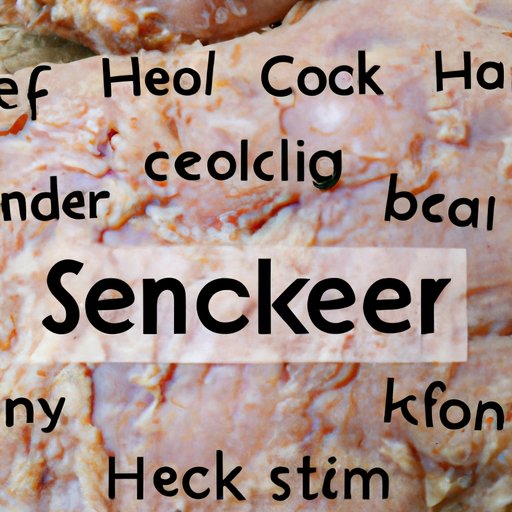Introduction
Chicken skin, also known as keratosis pilaris, is a common condition that causes small, rough bumps on the skin. It typically appears on the back, arms, thighs, and buttocks, though it can occur anywhere on the body. While chicken skin is not harmful or contagious, it can cause discomfort or embarrassment for those affected. This article will explore the causes, symptoms, and treatments of chicken skin, including home remedies and diet adjustments.

Understanding the Symptoms of Chicken Skin
Chicken skin is characterized by small, hard bumps and patches that are usually white or pinkish in color. The bumps may look like goosebumps, acne, or razor burn, but they are usually much smaller. They may be accompanied by dryness, itching, redness, or irritation. In some cases, the bumps may become inflamed and filled with pus, which can lead to scarring.
If you think you may have chicken skin, it’s important to seek medical advice from a dermatologist. A doctor can diagnose the condition and rule out other skin conditions, such as psoriasis, eczema, or folliculitis.

Managing Chicken Skin in Everyday Life
If you have chicken skin, there are several steps you can take to manage the condition in everyday life. First, it’s important to keep the affected areas clean and moisturized. Avoid harsh soaps and exfoliants, which can irritate the skin and make the condition worse. Instead, opt for gentle cleansers and moisturizers that are specifically designed for sensitive skin.
It’s also important to avoid tight clothing, which can rub against the bumps and cause further irritation. Instead, choose loose-fitting garments that won’t come into contact with the skin. If the bumps are particularly itchy or uncomfortable, cold compresses can help reduce inflammation.
Differentiating Chicken Skin from Other Skin Conditions
Chicken skin is often mistaken for other skin conditions, such as acne, psoriasis, or eczema. However, there are several key differences between these conditions. Acne is characterized by blackheads and whiteheads, while psoriasis is characterized by thick, scaly patches of skin. Eczema is usually accompanied by intense itching and redness. Chicken skin, on the other hand, is characterized by small, hard bumps that are usually white or pinkish in color.
It’s important to distinguish between chicken skin and other skin conditions, as each condition requires different treatment. A doctor can provide an accurate diagnosis and recommend the best course of action.

Home Remedies for Treating Chicken Skin
There are several home remedies that can help treat chicken skin. Oatmeal baths, for example, can help reduce inflammation and itching. To make an oatmeal bath, simply grind 1 cup of oatmeal into a fine powder and add it to a warm bath. Soak in the bath for 15 to 20 minutes, then rinse off with lukewarm water.
Coconut oil is another effective remedy for chicken skin. The natural fatty acids in coconut oil help to hydrate and nourish the skin, reducing redness and irritation. Simply massage a small amount of coconut oil into the affected area twice a day. For best results, use unrefined, cold-pressed coconut oil.
Exploring the Link between Diet and Chicken Skin
Some experts believe that diet may play a role in the development of chicken skin. Certain foods, such as dairy products and processed foods, can trigger inflammation and aggravate the condition. On the other hand, certain nutrients, such as omega-3 fatty acids, vitamin A, and zinc, may help reduce inflammation and improve the appearance of the skin.
If you have chicken skin, it’s worth exploring the possible link between diet and the condition. Eliminating certain foods from your diet and adding others may help reduce symptoms and improve the overall appearance of the skin.
Conclusion
Chicken skin is a common condition that can cause red bumps and patches on the skin. Knowing the symptoms, causes, and treatments of chicken skin can help you manage the condition and reduce its effects. Home remedies, such as oatmeal baths and coconut oil, can be useful for treating the condition. Additionally, adjusting your diet may help reduce symptoms and improve the appearance of the skin.


